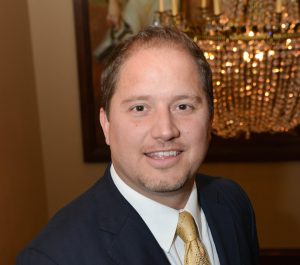Building justice from the community up in North Lawndale
By Jean Lotus Staff Reporter — May 4, 2016The Cook County Circuit Court and a North Lawndale volunteer youth support organization are partnering to bring a “community court” to the Chicago West Side neighborhood. After two years of planning, the court received help from a $200,000 grant from the U.S. Justice Department, administered through the New York-based Center for Court Innovation.
Through a set of practices called “restorative justice” the court will give non-violent, adult offenders a chance to heal the harm they caused to the victims of their crimes, as well as the community.
“In the current legal system, the defendant is only accountable to the state,” said Circuit Court Judge Colleen Sheehan. Convicted defendants are removed from the community and incarcerated, but that doesn’t necessarily fix the problem, she said.
“Restorative justice takes the approach that the defendant can work to repair the harm caused by crime to the victim and the community,” Sheehan said.
A disproportionate number of Chicago residents from poor neighborhoods are swept into the criminal justice system, studies have shown.
“Incarceration and conviction rates are off the charts. The system is not working,” said Cliff Nellis, criminal defense lawyer and executive director of the Lawndale Christian Legal Center.
Nellis said demographic studies have shown 50 percent of North Lawndale residents, and 70 percent of men in the neighborhood have criminal convictions.
“That knocks out most of the community from [well-paying] employment for the rest of their life,” he said. “It’s extremely expensive. We’re spending a lot of money putting people in jail and it’s not working.”
Community courts have been shown to make a difference in places like the Red Hook neighborhood in Brooklyn, N.Y., Sheehan said.
The court will link defendants to services such as mental health or addiction treatment, Sheehan said.
“We have community partners who help identify what the [defendant’s] problems are and can help provide solutions such as job training, substance abuse treatment, family care or educational services,” she said.
The first year of the project will serve 100 defendants. Defendants must have no more than one prior felony conviction and their charge must be non-violent. The location of the community court has not been decided, yet, but organizers hope to have it up-and-running by 2017.
Young people are especially vulnerable to make a mistake that can change their life’s direction for the worse, Nellis believes.
 Members of the North Lawndale Community Restorative Justice Hub believe “disconnected, court-involved youth belong in the community, not in detention.”
Members of the North Lawndale Community Restorative Justice Hub believe “disconnected, court-involved youth belong in the community, not in detention.”
“Stakeholders,” including Nellis, work with young people under age 25 to create a path for at-risk or criminally charged young people to draw on community support.
Volunteers represent 18 different community organizations, including the local County Commissioner, the Chicago Police 10th District officers, school employees, healthcare providers and members of prison re-entry organizations.
Community members are identified as someone who “lives, works or worships in North Lawndale,” Nellis said.
Part of the program involves “peace circles” where the offender and victim (or victim’s surrogate) communicate the harm that a crime caused and talk about ways to make the victim whole.
“Offenders have to apologize, show accountability and work to make things right,” Nellis said. Nellis said offenders are expected to offer to pay back or make up for the harm their actions caused, even if they don’t have the money to pay restitution. Community members also participate to explain the harm the offense has done to them.
Victims of a crime such as theft are often more upset about their shaken sense of security than they are about a stolen item, Nellis said. That can change if they know the circumstances of the crime and the background of the young person who committed it.
“Victims are often deeply comforted by knowing a better understanding of the person and their history and upbringing,” he said. “They feel more restored in their sense of safety.”
Nellis emphasizes his group works with younger people charged with misdemeanors and non-violent crimes.
“There are things going on in [the offenders’] lives that absolutely contribute to where they’re at,” Nellis said. “To deny that is to deny reality. They have suffered trauma, and often offenders are victims and victims are offenders.”
Sheehan says understanding the circumstances of offenders also holds the community accountable.
“Community members can look at [the offense] and ask ‘what has caused this?’” she said. “How do we repair the harm from this crime? The questions are simple, but the answers are much more complex.”
Sheehan says many Chicago communities are “distrustful” of the school system, police and court system. Community courts involve local stakeholders, she said, “so the community members are involved in justice, and have some power to decide what justice will look like for them.”
Cook County Circuit Court Chief Judge Timothy Evans said the new court reflected a change in how the criminal justice system served the public.
“The Community Court sends a message to the public that we are committed to resolving conflicts in our neighborhoods in a way that both helps nonviolent offenders take responsibility for their actions while also providing restitution and restoration to victims,” Chief Judge Evans said in a press release. “This is a court dedicated to improving lives and increasing confidence in our system of justice.”
Related content: North Lawndale residents share ideas to “reset” the neighborhood
Read the current issue of the Cook County Chronicle
Free digital subscription to the Cook County Chronicle
—
Building justice from the community up in North Lawndale —








